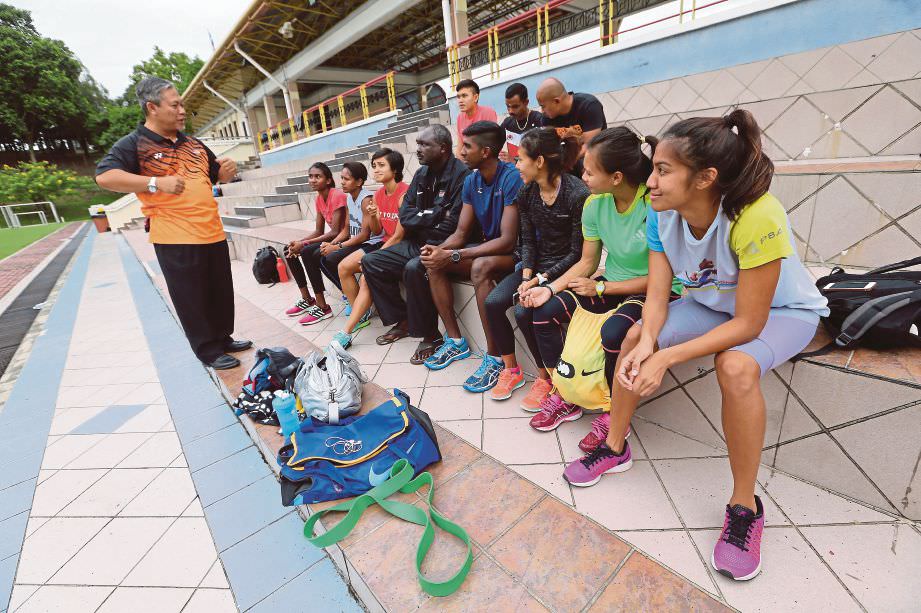 HAVE you ever imagined eating with your eyes shut or in total darkness?
HAVE you ever imagined eating with your eyes shut or in total darkness?
I experienced it at Dining In The Dark Kuala Lumpur concept restaurant (www.dininginthedarkkl.com) recently.
Walking in a line, hands on the shoulders of the person in front, we were guided to our tables by visually impaired guides. I had no idea of the room setting because it was in total darkness (any light source was not allowed, including mobile phones, lighters or wristwatches).
Once at the table, the guides called “darkness experts” briefed us on the table setting so that we knew where to reach for the utensils and food.
The smell of the five-course food was appetising. However, I didn’t enjoy the experience at all mainly because I couldn’t see what I was eating. I struggled to find my food, and had to smell and touch to guess what I would be eating.
I was restless and clueless throughout the two-hour dinner and had to depend heavily on my guide. I was also not in the mood to talk to the person next to me because I could only hear her, and not see her. It was the longest and perhaps, the most gruelling dining experience I’ve ever had.
DIABETIC RETINOPATHY
The dining experience made me realise what visually impaired people have to go through daily. It demonstrated to me what is it like to be in someone else’s shoes — someone who is blind, or about to go blind, because of a disease.
This initiative was part of Sunway Medical Centre’s Let’s Take 5 campaign this year themed See Diabetes. The campaign is aimed at educating the public on different diabetes-related complications, starting from stroke right up to diabetic foot complications. This year, its focus is on increasing how diabetes can affect vision (diabetic retinopathy).
Sunway Medical Centre ophthalmologist Dr Tara Mary George says diabetic retinopathy is a condition in which fine blood vessels or capillaries that supply oxygen and nutrients to the retina are damaged due to high levels of blood sugar.
“It causes the blood vessels to become blocked, resulting in the lack of oxygen. The lack of oxygen stimulates the release of a chemical (vascular endothelial growth factor) that induces the growth of abnormal blood vessels that bleed into the vitrous or eye cavity, leading to loss of vision.”
She adds that cataract, glaucoma as well as other retinal blood vessel disorders such as retinal vein and artery occlusion (stroke in the eye) also common in diabetics.
According to the National Health Morbidity 2011, the number of people aged between 20 and 40 affected by diabetes is increasing.
“I’m seeing more younger patients whose vision is affected by diabetes, with the youngest aged 16. This is alarming because it is likely that we will see more people losing their vision at the most productive age of their lives,” she says.
The Malaysian Council for Obesity Prevention has estimated that 3.6 million Malaysians are diabetic, a figure that has surpassed the World Health Organisation’s estimate of 807,000 diabetics by 2025.
NO EARLY SYMPTOMS
In the early stages of diabetic retinopathy there may be no symptoms at all and the disease may not be diagnosed until it is advanced. The condition is also painless.
“The patient’s vision can be perfectly normal even at severe stages of retinopathy. However, it is advisable for the patient to go for eye screening before the symptoms and visual loss set in.
“The condition is reversible if it’s still at its mild and moderate stage, with proper treatment and better diabetes control,” says Dr Tara, adding that diabetic retinopathy can be diagnosed after a thorough process that involves visual acuity, intraocular pressure check and a retinal examination with a slit lamp microscope or a retinal camera.
GUIDE ON DIABETIC RETINOPATHY
Who is at risk?
• Diabetics with duration of diabetes more than 10 years.
• Diabetics with poorly controlled diabetes.
• Diabetics with other organ damage such as kidney (nephropathy). Eyes and the kidneys share similar blood vessels.
• Smokers.
• Diabetics with anaemia.
• Pregnant diabetics (retinopathy does not occur in women who only have high blood sugar during pregnancy that revert to normal levels after delivery).
What are the symptoms?
• Blurred, distorted or patch vision that can’t be corrected with prescription glasses.
• Sudden onset of floaters or specks in the field of vision.
• Problems with balance, reading, watching television and recognising people.
• Being overly sensitive to glare.
• Difficulty seeing at night.
• Seeing lines as crooked.
How frequently should a patient see an ophthalmologist?
• Type 1 diabetics should have an eye examination for the first time five years from diagnosis.
• Type 2 diabetics should have an eye examination at diagnosis, and at least once a year after that.
• Pregnant diabetics should have an eye examination every trimester until delivery. A diabetic woman who plans to get pregnant is advised to get her eyes checked before conceiving.
What are the available treatments and costs involved?
• Laser treatment costs between RM400 and RM1,000.
• Drug injections cost between RM700 and RM3,500 (depending on the drugs used).
• Surgery costs up to RM10,000.
How can a patient protect himself from losing sight?
• Maintain blood sugar control HBA1c levels between 6.5 and 7.0.
• Control blood pressure and lipids (as they contribute to blood vessel damage as well).
• Get regular eye check-ups.
• Beware of visual symptoms.
• Quit smoking.
What options are available for a patient with diabetic retinopathy?
Most diabetics still have navigational vision even with severe diabetic retinopathy. Although some may lose the ability to read, drive and maintain a quality life, there are devices to help them cope with the challenges. For example, special low vision devices, telescopes and magnifiers can help.
DINE IN THE DARK
ACCORDING to Dining In The Dark media liaison manager Nicole Pua, the concept of dining in total darkness was initiated by a blind clergyman in Zurich, Switzerland in 1999. Dining In The Dark Kuala Lumpur, which opened its doors in December last year in Jalan Changkat Bukit Bintang, is the first of its kind in the country.
Apart from its unique concept, the restaurant prides itself in having the blind and the visually impaired to run the business mainly as waiters.
“Currently we’ve three visually impaired and blind staff. Called the “darkness experts”, they have been trained to provide services as any in other restaurants but most importantly, to guide diners through the entire dining experience,” says Pua, who has been blind since birth.
She adds that it is a challenge to get more blind and visually impaired people to work at the restaurant.
“Many doubt their ability to work here. However, we believe that they can, and we want to have more of them on board,” she says.
EARLY DETECTION SAVES VISION
ALL was well for young mother, Sarah (not her real name) after the delivery of her first child in July. However, on the second week of her confinement, things turned bad for the 25-year-old diabetic as she started seeing dark spots.
“My eyes looked fine but my view was marred by black spots. It was painless but I was scared because I knew something was wrong. I was afraid that I was going blind.
“I was frustrated too because I went for eye check-ups during my pregnancy and nothing was detected,” says Sarah who has suffered from diabetes since she was in primary school.
She was diagnosed with diabetic retinopathy and is currently undergoing laser treatment.
“My vision has shown some improvement. I hope things will be better soon so that I can take care of my baby,” she says.
Sarah adds that not a day hasgone by without her that her eye sight would not have been affected had she taken early precautions.
“I wish I had managed my diabetes well so that I don’t have to go through this terrifying experience,” she says.
– NST






